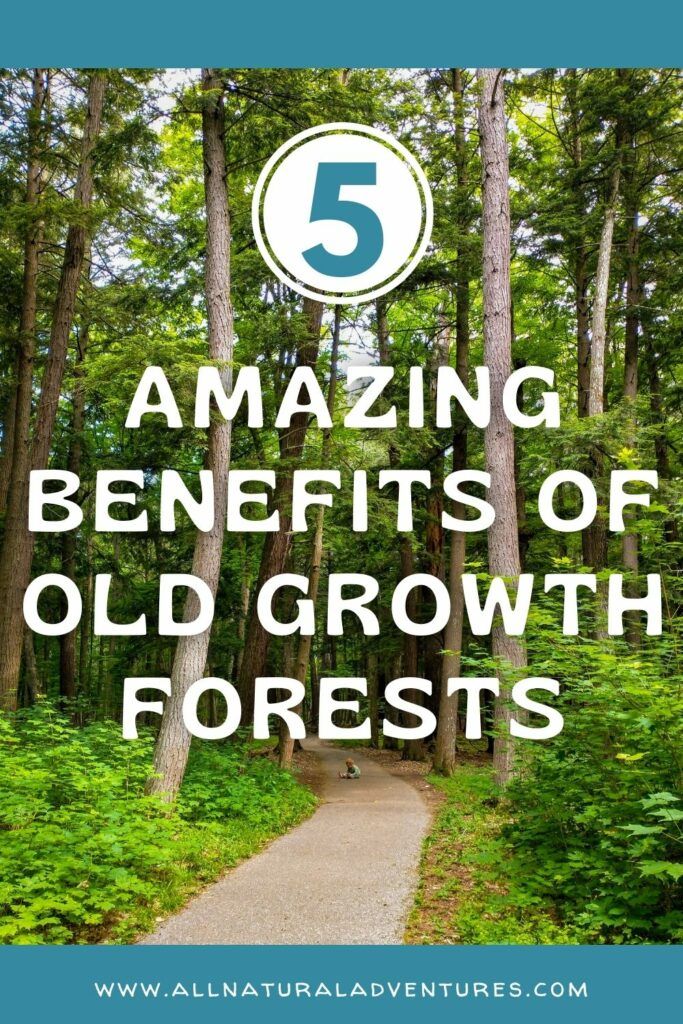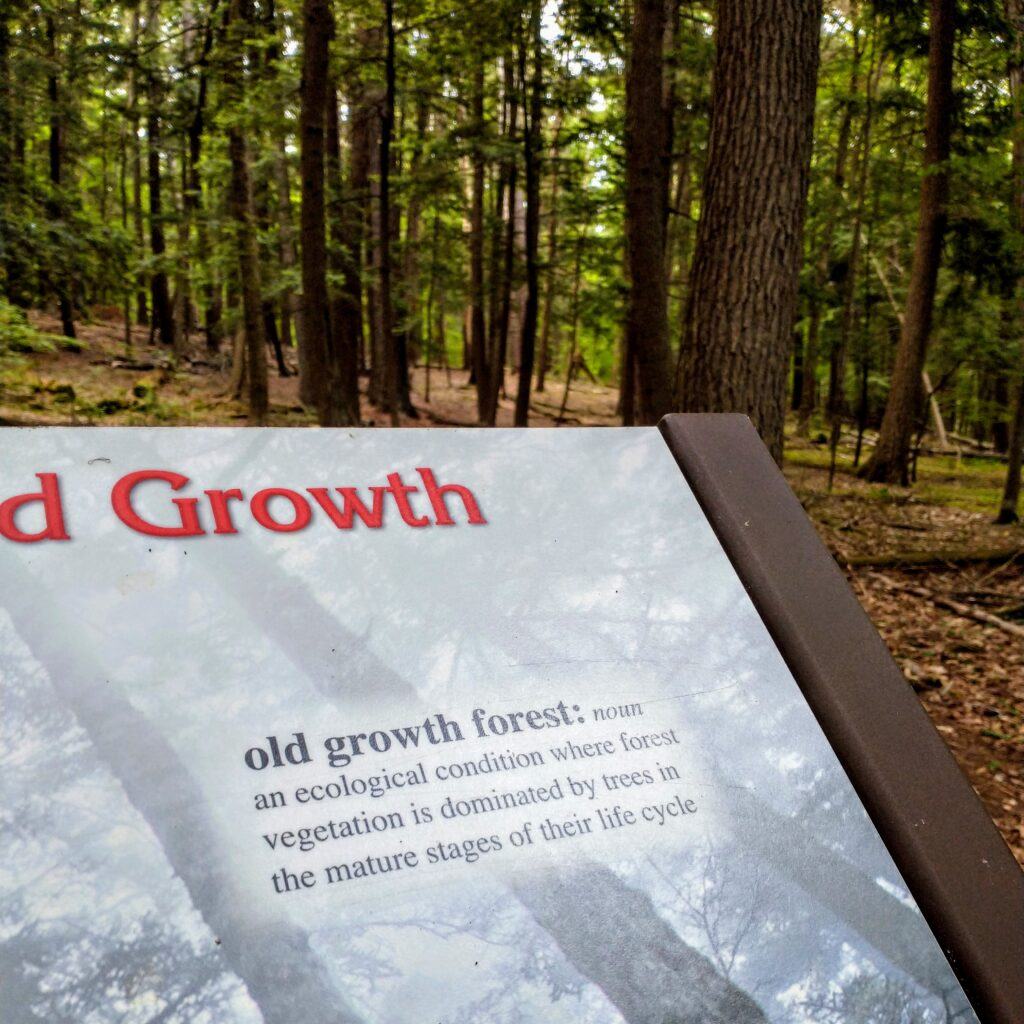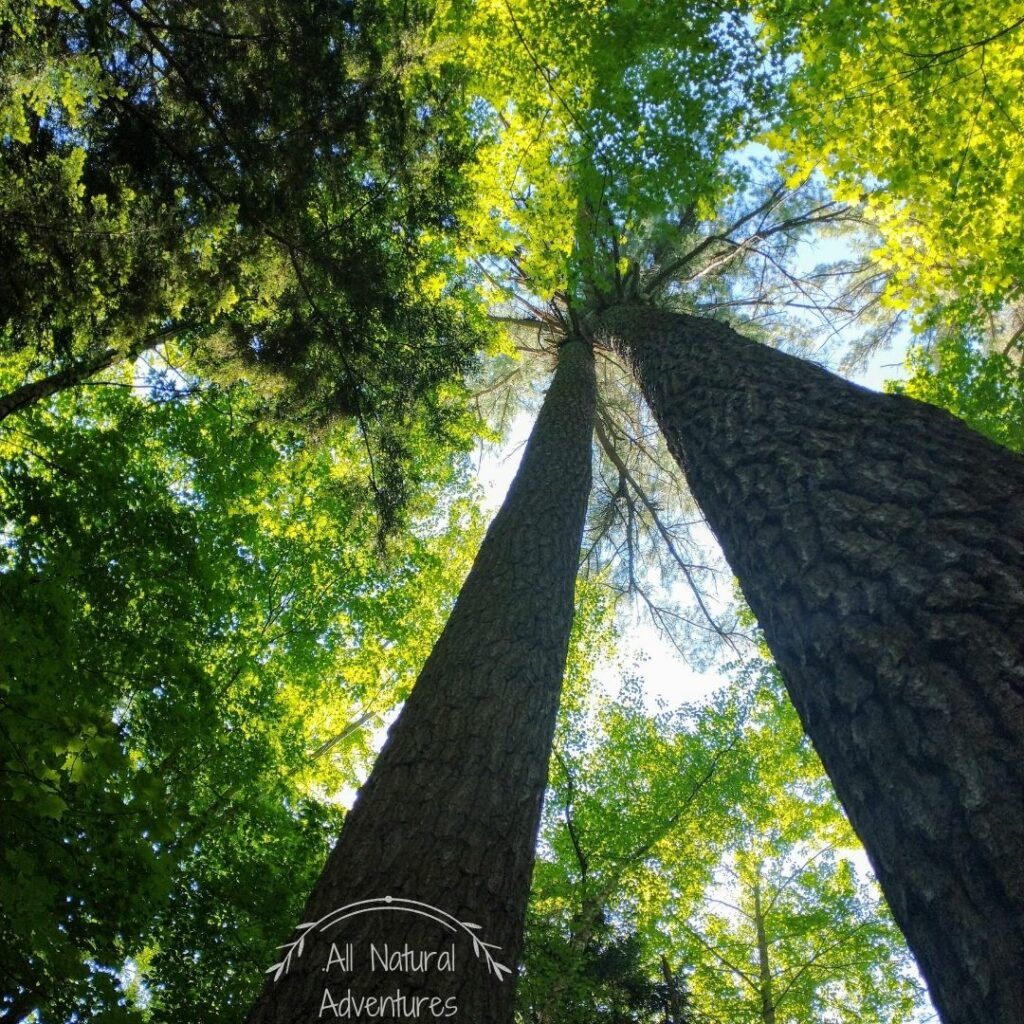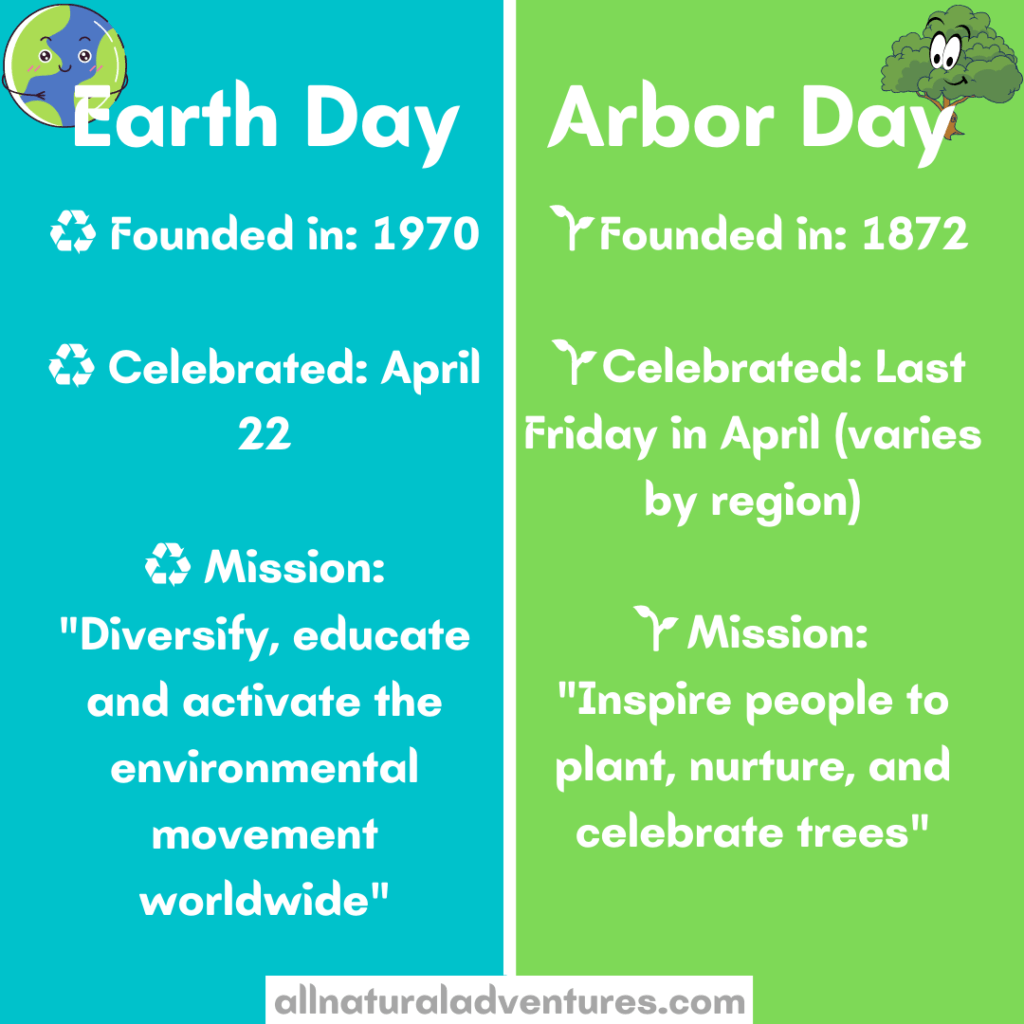Spending time in nature is so good for our minds and bodies. Simply being in nature can reduce stress, provide healing and improve moods.
Beyond boosting our mental and physical health, natural spaces, especially old growth forests, help maintain a healthy environment as well.
What makes old growth forests so important?
First, let’s cover what an old growth forest is exactly. Then, we’ll dive into 5 amazing benefits they provide for all living creatures on our beautiful planet.

What Is An Old Growth Forest?
The definition of an old growth forest can vary depending on who you ask. They can also be known as ancient, virgin or primary forests.
Here’s one great definition from an informational kiosk at Hartwick Pines State Park in Michigan. (Read all about this majestic old growth forest here.)

“An old growth forest: an ecological condition where forest vegetation is dominated by trees in the mature stages of their life cycle.”
Michigan Department of Natural Resources
Some characteristics to look for in an old growth forest:
- Old trees with large trunks
- Canopy gaps – open spaces between trees that allow sunlight in
- Lack of understory development – few shrubs and small trees beneath the larger canopy of trees
- Pits and mounds – mounds formed by uprooted trees and the pits left behind
- Coarse woody debris – fallen trees and large branches
Now that we’ve covered the definition, let’s explore what makes older trees so amazing.

5 Ways Old Growth Forests Are Awesome
1. These carbon storing superstars help slow the effects of climate change.
In recent years, studies like this one on the Global Importance of Large-Diameter Trees have shown one way mature trees protect the environment. They’ve found that larger, older trees store more carbon than younger, smaller trees.
More carbon storage = slower increase of global temperatures.
2. Mature forests contain rich biodiversity.
After hundreds of years of growth, older forests have a diverse ecosystem of various wildlife and plant life, that can’t be found in newer forests. Even today, scientists are still discovering new species – 7 new animals so far in 2021. Pretty wild!
Healthy forest have lots of biodiversity, which keeps the whole ecosystem stronger and more resilient.
3. Deep tree roots create a natural water purification system.
Trees are one of the best ways to naturally purify water. When it rains, water soaks into the soil. Deep tree root systems then absorb pollutants and filter the rainwater.
When it comes to old growth forests, these larger trees have deeper roots that can purify more water than younger forests.
4. Older forests provide valuable wildlife habitats.
Full of towering trunks, both the living trees and the fallen ones provide lots of spaces for animal homes. Older forests are often home to many rare or endangered species. In the Pacific Northwest, the red tree vole and the northern spotted owl both depend on habitats in old growth forests.
5. Full of stunning beauty, ancient forests provide majestic spaces to enjoy and explore.
People love spending time in gorgeous natural spaces like old growth forests. Surrounded by greenery, they provide a beautiful space for recreational activities like hiking and birdwatching. Strolling through ancient trees can fill people with a sense of awe only found in nature.
Related: 16 Hiking & Camping Activities: Fun Times Ahead!

Happy Little Trees
Forests provide so many amazing benefits for our planet. Cleaner air and water, homes for wildlife, and beautiful spaces to explore – to name a few.
For a healthy planet, protecting and preserving these valuable old growth forests is essential. One simple change our household has made recently is using more sustainable paper products. Read more here: Who Gives a Crap Toilet Paper Review: Funny Name, Seriously Sustainable.
Have you made any lifestyle changes to save more trees? Do you have any forest protection organizations you support? I’d love to hear from my fellow tree huggers in the comments below.



